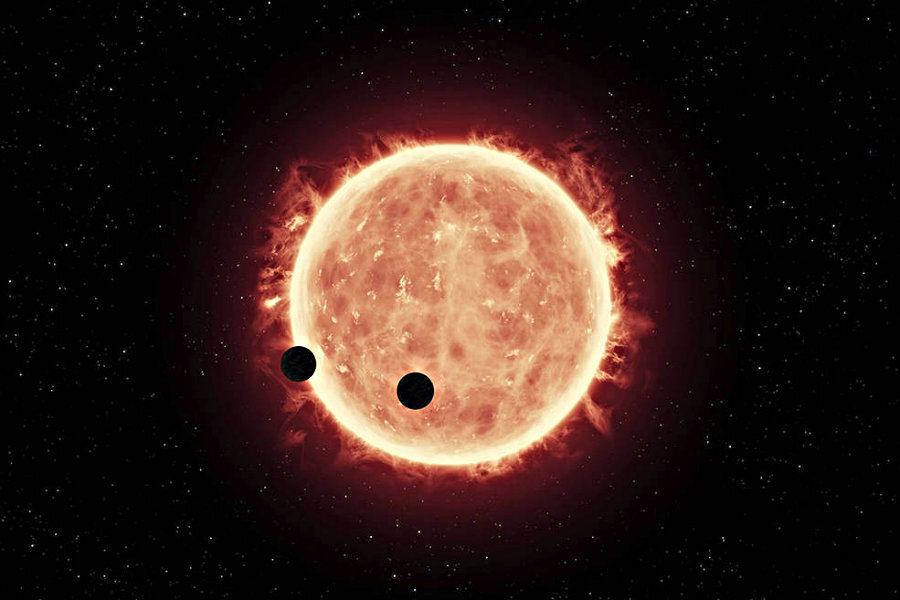Two Earthlike exoplanets might have evidence to support life
Loading...
Astronomers may have taken one step closer to discovering exoplanets with conditions favorable to life, after the May discovery of two rocky exoplanets without wispy, hydrogen-dominated atmospheres.
The two exoplanets are located just 40 light years away, orbiting an ultracool red dwarf star called TRAPPIST-1 in the constellation Aquarius. These planets are some of the first examples that scientists can study in depth to determine whether or not they have the conditions necessary to support life.
“With more observations using Hubble, and further down the road with James Webb, we can know not only what kind of atmosphere planets like TRAPPIST-1 have, but also what is within these atmospheres,” says study lead author and MIT postdoctoral researcher Julian de Wit in an MIT press release. “And that’s very exciting.”
Like the star, these two exoplanets, TRAPPIST-1b and TRAPPIST-1c, are named for the telescope that discovered them, the European Space Agency’s Transiting Planets and Planetesimals Small Telescope (TRAPPIST) telescope in Chile.
Because their sun is so much fainter than our own, the two planets are located much closer to their sun than we are to ours, with TRAPPIST-1b orbiting its sun in 1.5 days, and TRAPPIST-1c making the trip in just 2.4 days.
Yet because of the weak light emitted by its sun, scientists think that TRAPPIST- 1c (and perhaps TRAPPIST-1b) may be located within the “habitable zone” despite its proximity to the red dwarf. A sun’s habitable zone is the distance from the sun in which a planet is warm enough to support liquid water, but far enough away to not be scorched by the sun’s heat.
In April, scientists realized that the two exoplanets would engage in a rare event, a double transit in which they would both pass in front of their sun, in early May. Observing double transits allows researchers to determine the amount of starlight that passes through the planets’ atmospheres, and therefore can tell scientists much about the composition of those atmospheres.
“We thought, maybe we could see if people at Hubble would give us time to do this observation, so we wrote the proposal in less than 24 hours, sent it out, and it was reviewed immediately,” Dr. de Wit said in an MIT press release. “Now for the first time we have spectroscopic observations of a double transit, which allows us to get insight on the atmosphere of both planets at the same time.”
Scientists observed the difference in wavelengths as the sun’s light was filtered through the planets’ atmospheres. The narrow range of wavelengths that scientists observed varied very little, indicating to researchers that the exoplanets had “more compact” atmospheres than gassy planets like Jupiter.
So what do those atmospheres look like? Scientists are still not quite sure.
“The plausible scenarios include something like Venus, where the atmosphere is dominated by carbon dioxide,” says de Wit, “or an Earth-like atmosphere with heavy clouds, or even something like Mars with a depleted atmosphere. The next step is to try to disentangle all these possible scenarios that exist for these terrestrial planets.”
According to paper co-author Hannah Wakefield, spotting methane or water on either planet could teach scientists a great deal about the atmospheres.
Researchers plan to study the atmospheres further using both Hubble and NASA’s James Webb Space Telescope.
The study was published yesterday in the journal Nature.








